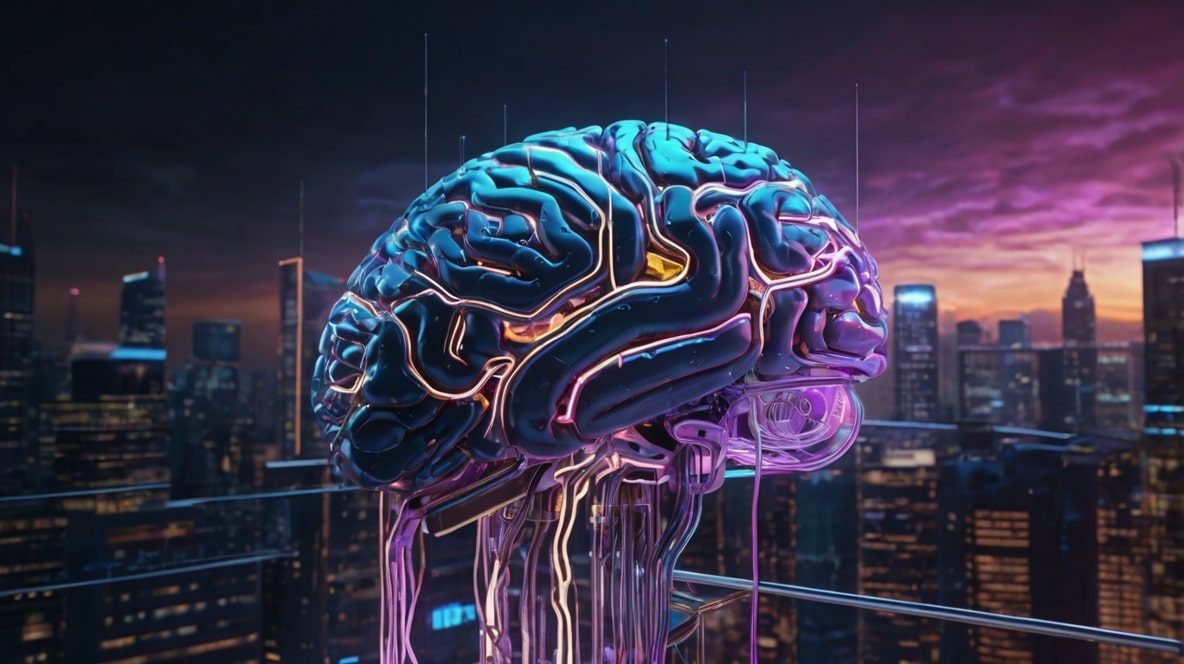OpenAI didn’t just release a new version of ChatGPT. They hit the reset button on the whole lineup.
On August 7, 2025, GPT-5 arrived — replacing GPT-4.1, GPT-4.5, GPT-4o, and every other flavor of “o” models with one unified AI brain.
This isn’t just a model upgrade. It’s a platform reboot with new features, personalities, and enough horsepower to make your laptop blush.
- 🧠 “A Team of PhDs in Your Pocket” — The Big Pitch
- 🔄 One Model to Rule Them All
- 📸 More Than Just Text — The Multimodal Leap
- 📜 The Context Window is Now a Canyon
- 🎭 Meet the Four New ChatGPT Personalities
- 💻 Developers, This One’s For You
- ⚖️ The Reception: Praise, Gripes, and “Is This It?”
- 💡 Why This Matters More Than You Think
- 🔮 What’s Next? The Smart Money Says…
- 📌 The Bottom Line
🧠 “A Team of PhDs in Your Pocket” — The Big Pitch
OpenAI’s headline claim?
GPT-5 is faster, more accurate, and less prone to the dreaded AI brain-fart (“hallucination,” if you want to be polite).
We’re talking:
- Sharper reasoning — step-by-step breakdowns feel more like an expert tutor, less like a guessy chatbot.
- Better focus — the model sticks to the question instead of wandering into unrelated tangents.
- Less flattery — reduced “sycophancy,” meaning it’s less likely to agree with you just to be agreeable.
In short: more confident brain surgeon, less people-pleaser.
🔄 One Model to Rule Them All
Remember picking between GPT-4 Turbo, GPT-4o, GPT-4.5, and other mysterious letters?
That’s gone.
GPT-5 uses a dynamic routing system — basically an invisible switchboard that decides:
- When to fire up the fast mode for quick answers
- When to bring in the thinking mode for deep reasoning
No more model-picker. No more wondering, “Did I pick the good one?”
It just… does it for you.
This could make ChatGPT feel simpler for casual users — but it also means less manual control for power users. And yes, some early adopters are already grumbling.
📸 More Than Just Text — The Multimodal Leap
GPT-5 isn’t just a text model. It’s a multimodal Swiss Army knife:
- Reads and generates text
- Understands and describes images
- In some setups, can handle audio and video (though not fully rolled out everywhere yet)
This opens up use cases that sound like science fiction until you try them:
- Drop in a screenshot of code → get instant bug fixes
- Upload a photo of a legal document → get a plain-English summary
- Share a product photo → get marketing copy, translations, and SEO keywords in one go
📜 The Context Window is Now a Canyon
If GPT-4 felt smart but forgetful, GPT-5’s memory is a serious glow-up:
- 256K tokens in ChatGPT (that’s roughly 200–300 pages of text)
- Up to 400K tokens via API
Translation: you can feed it entire books, massive codebases, or months of chat history without it spacing out halfway through.
This is huge for researchers, lawyers, writers, and devs who hated the “short-term memory loss” problem.
🎭 Meet the Four New ChatGPT Personalities
For the first time, OpenAI is letting you choose how ChatGPT talks.
The options sound like the start of a bad sitcom:
- Cynic – sarcastic, skeptical, and ready with a side-eye.
- Robot – cold, efficient, and formal.
- Listener – warm, empathetic, and validating.
- Nerd – enthusiastic, detail-obsessed, and trivia-heavy.
It’s a surprisingly big deal — tone changes how the AI explains things, what examples it uses, and whether it feels like a teacher, friend, or annoyed coworker.
💻 Developers, This One’s For You
If you’re building on OpenAI’s API, GPT-5 comes in three sizes:
- GPT-5 Standard — maximum power and accuracy
- GPT-5 Mini — lighter, cheaper, faster
- GPT-5 Nano — ultra-fast, micro-cost for high-volume apps
Plus, devs get new control dials:
verbosity— pick between “short and snappy” or “tell me everything”reasoning_effort— trade off speed vs. deep thinking- Native tool integration hooks for easier function calling
And the benchmarks? They speak for themselves:
- 74.9% on SWE-bench Verified (software engineering tasks)
- 88% on Aider polyglot (multi-language coding)
⚖️ The Reception: Praise, Gripes, and “Is This It?”
The Praise
- Feels noticeably smarter and less error-prone than GPT-4.
- Massive context window is a game changer for professionals.
- Dynamic routing means casual users get the “good” mode automatically.
The Gripes
- Some power users miss manual model selection.
- Initial rollout had routing hiccups — same question, different quality answers.
- Critics say GPT-5 is more evolutionary than revolutionary — a refined GPT-4, not a radical leap.
💡 Why This Matters More Than You Think
GPT-5 isn’t just about better answers. It’s about OpenAI’s vision for the next phase of AI:
- Unification — fewer separate models, more seamless automation.
- Scalability — context windows big enough to handle enterprise workloads.
- Human-AI style blending — tone and personality controls hint at future “personalized AI assistants” that actually feel distinct.
If GPT-4 was the AI that proved the concept, GPT-5 is OpenAI starting to polish the edges for mainstream adoption.
🔮 What’s Next? The Smart Money Says…
Expect rapid iteration.
OpenAI’s model updates are speeding up, and GPT-5’s architecture makes it easier to slot in improvements without a full rebrand.
Things to watch:
- Will OpenAI restore legacy models for those who want them?
- How quickly will audio/video features roll out to all users?
- Will competitors (Anthropic, Google DeepMind, Meta) match the 400K token window?
One thing’s certain: GPT-5 is not the endgame.
It’s the foundation for something even bigger — maybe GPT-6, maybe “Project Strawberry,” maybe something we don’t even have a codename for yet.
📌 The Bottom Line
ChatGPT-5 is here, and it’s:
- Faster
- Smarter
- More flexible
- More human-feeling
It’s not an AGI revolution. But it’s the most capable public AI model you can use today — and it just made your excuses for not automating half your work a lot weaker.





